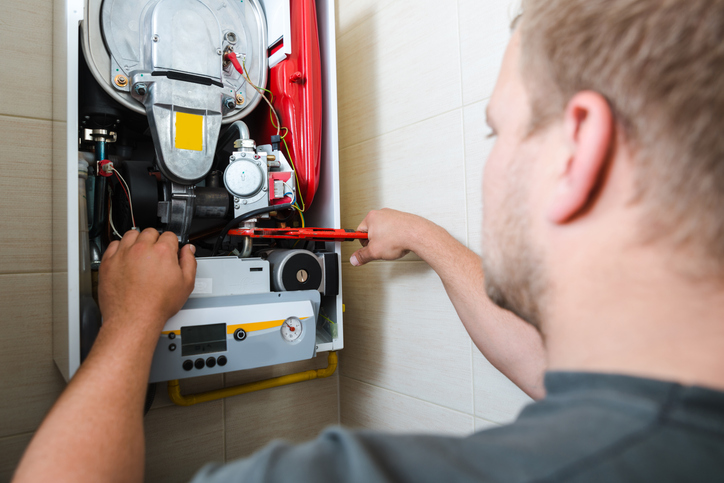Your furnace is one of your home’s biggest investments—and it works harder than almost any other appliance. While most furnaces last around 15 years, poor maintenance can cut that lifespan short, leaving you with costly repairs or premature replacement. Follow these five actionable steps to maximize your furnace’s lifespan and keep more money in your pocket.
1. Perform or Schedule an Annual Tune-Up (Save $500+ on Emergency Repairs)
Action Step: Perform, or Book your tune-up every fall before heating season begins.
A professional tune-up costs around $100-150 but can prevent expensive emergency repairs that often cost $500 or more. During the service, technicians will inspect, clean, lubricate, and adjust your system for peak efficiency.
On the other hand, contractors can use this as an excuse to come in your home and sell you a new furnace or parts that don’t need to be replaced. So if you are handy and can follow some instructional videos, I think anyone should be able to do their own furnace tune up. The reality is that once a furnace is installed and has fun for years, the biggest maintenance items are keeping the filters changed, and cleaning the flame sensor.
Here is a tutorial on how to perform your own furnace maintenance:
Things to Look For:
- Your furnace struggling to heat your home
- Weak airflow from vents
- Unusual noises during operation
- Strange odors (especially rotten egg smell—evacuate and call your gas utility immediately)
- Higher energy bills despite similar usage
2. Replace Air Filters Monthly (Cut Energy Costs by 15%)
Action Step: Set a monthly reminder and buy filters in bulk to save money.
Dirty filters force your furnace to work 15% harder, driving up energy costs and causing premature wear. Replace standard fiberglass filters every 30 days, or follow your manufacturer’s recommendations.
Money-saving tip: Buy filters in 6 or 12-packs online—they’re often 30-40% cheaper than single purchases at hardware stores.
If you haven’t upgraded your filter rack to a 4”, this is something I would highly recommend. Here is a video that walks you through how to do that:
3. Clean Your Flame Sensor (Save $300-$500 on Emergency Repairs)
Action Step: Clean your flame sensor once per year, preventing that pesky run/stop scenario. Most people call a company and pay hundreds for this, when it can be done very easily yourself.
Having a professional come afterhours could be expensive. ($300-500) So cleaning this simple component can improve system efficiency by up to 20%, paying for itself through lower energy bills.
I have a tutorial video that shows you how to clean your flame sensor, step by step:
4. Lower Your Thermostat When Away (Save $200+ Annually)
Action Step: Install a programmable thermostat and set it to 68°F when home, 62°F when away.
Reducing your thermostat by just 7-10 degrees for 8 hours daily can save up to 10% on heating costs—that’s $200+ per year for the average household.
Smart upgrade: Programmable thermostats cost $50-150 but automate savings without sacrificing comfort.
5. Upgrade Your Insulation (Reduce Heating Costs by 30%)
Action Step: Get a home energy audit to identify insulation gaps, then prioritize attic insulation.
Better insulation means your furnace runs less often. Attic insulation upgrades typically cost $1,500-3,000 but can reduce heating costs by 30% or more.
Quick check: If your attic insulation is less than 10-12 inches deep, you’re likely losing significant heat and money.
Here are some other energy saving tips when it comes to your hvac system:
Protect Your Investment and Your Wallet
These simple maintenance steps can extend your furnace’s life by 5-10 years and save hundreds of dollars annually on energy costs. Most importantly, they help you avoid the expense of premature furnace replacement—which can cost $3,000-6,000 or more.
As always, if you are looking for quality tools to tackle these repair/maintenance items, you can find them in my amazon store: https://www.amazon.com/shop/thediyhvacguy?ref=ac_inf_tb_vh

